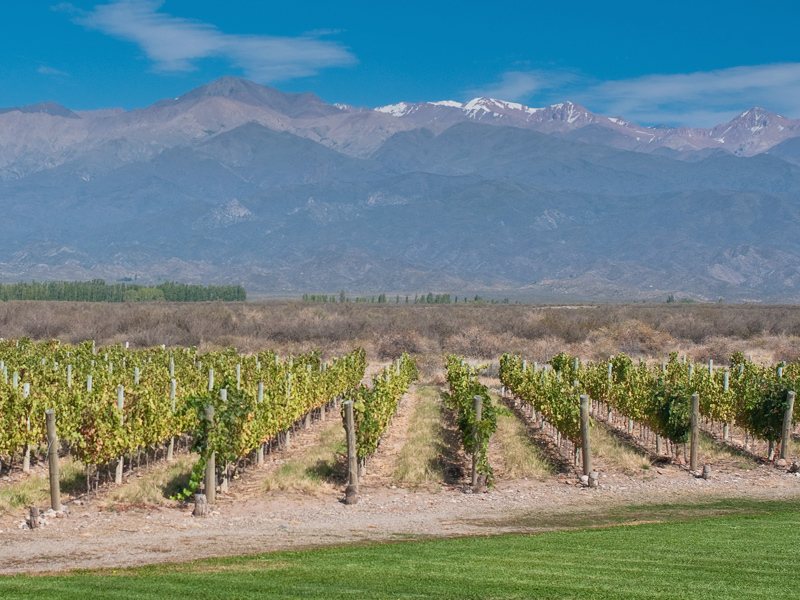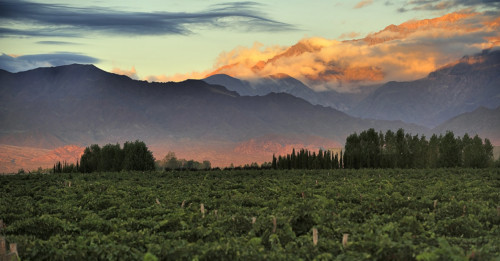Malbec is a dry red wine that appeals to the masses due to its affordability and approachable, juicy fruit flavors. While its popularity has surged over the past two decades, in reality, Malbec has been used as a blending grape in France for over a century. But it’s the Argentine expression (which people are most familiar with) that enjoys worldwide popularity.
Looking for a bottle to drink? Check out our regularly updated list of the best Malbec bottles!
Malbec in France
Malbec is indigenous to France and is used both as a blending grape and in varietal expressions. While Merlot and Cabernet Sauvignon are the dominant grapes in the red Bordeaux blend, Malbec is one of four additional allowable grapes. Though, when it is included, it’s usually less than 2 percent of the blend.
Historically, Malbec was a major planting in the region. But when a severe frost in 1956 wiped out a significant portion of Malbec vines, Merlot and Cabernet Franc were used in its place. Malbec’s susceptibility to rot caused many winemakers to avoid replanting too much of the grape, so they planted just enough to add to a blend if the grapes did indeed survive the growing season.
The south-west region of Cahors is the only area in France to make varietal Malbec wines. The appellation, which is about 130 miles east of Bordeaux, sits on both sides of the River Lot and is known for deeply colored Malbec that is medium to high in tannin with intense dark berry flavors. Most expressions that are aged in oak have notes of tobacco, cedar, and earth. While varietal Malbec is the area’s flagship, AOC regulations do allow for blends to include up to 30 percent Merlot or Tannat.
Malbec in Argentina
In the mid-nineteenth century, when a group of Argentine winemakers consulted French agronomist Michel Pouget for his thoughts on a grape they should plant to improve the quality of Argentine wine, the grape he recommended was Malbec. His suggestion led many winemakers to believe that Malbec was destined to be in Argentina all along. The vines thrived in the hot climate and high-altitude of the region, exhibiting none of the weaknesses they had in France.
For almost 100 years after being planted, Malbec remained a wine consumed inside Argentina, with very little exported. Even as quality increased over the years with the introduction of modern winemaking techniques, American consumers still had very little knowledge of it. Only in the early 2000s, did American wine drinkers fully embrace Argentine Malbec, and its affordable price tag and approachable profile.
How Malbec from Argentina Differs from Cahors
Malbec from Argentina’s high-altitude sub-regions of Mendoza (the Uco Valley and Lujan de Cuyo) has a distinguishable flavor profile. High levels of acidity and tannin support the intense fruit flavors and velvety texture. Flavors of blueberry, red plum, and cocoa often take center stage along with some herbal notes.

In contrast, Malbec from Cahors is plusher in texture, less tannic, and with a significantly more earthy character. Red and black currant notes dominate alongside tobacco, coffee, and licorice notes.
Malbec Food Pairings
One reason Malbec is so popular is how easy it is to drink and how well it pairs with food. From appetizers to entreés and even dessert, Malbec can be drunk alongside nearly anything.
The wine’s firm structure and moderate alcohol make it a natural pairing for meat, especially smoky or spice-rubbed red meat. Using herbs and spices in seasoning blends will intensify and highlight the fruit flavors of the wine. Given Argentina’s affinity for red meat, pairing Malbec with traditional Argentine barbecue (or asado) is a no-brainer. Vegetarians can enjoy great pairings as well, as long as the flavors lean toward umami and not bitter. Roasted mushrooms in pasta or rich and spicy bean burgers are great options to try.
While dry red wines aren’t a typical dessert wine, Malbec can work with the right dish. Avoid anything too sweet as it will make the wine taste sour and bitter. Opt for cheese, like a nutty manchego, sharp cheddar, or stilton. If you’re determined to try it with something sweet, go with something rich and high in fat, like cheesecake.
No matter the occasion or the flavor preferences of the group you’re with, Malbec is always a safe, crowd-pleasing bet.
